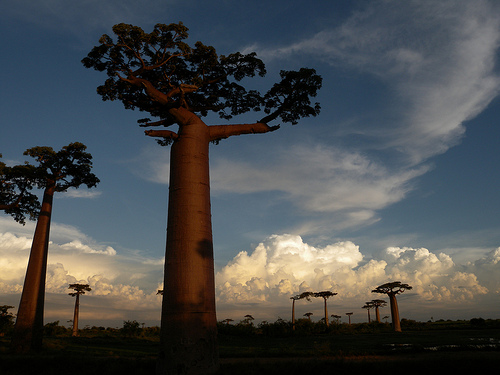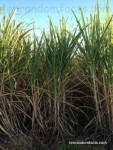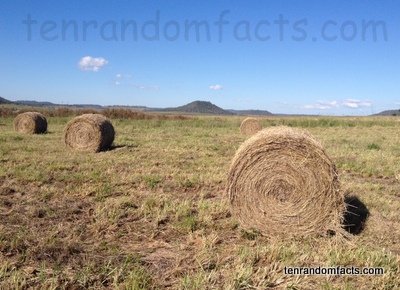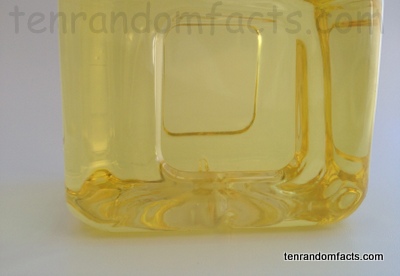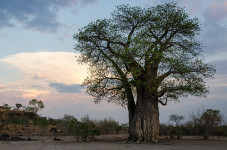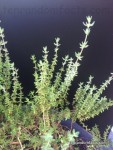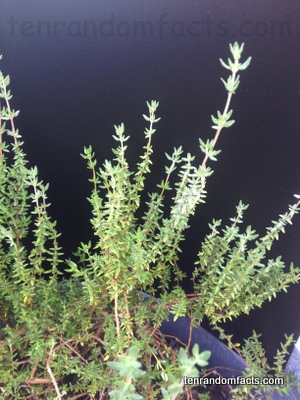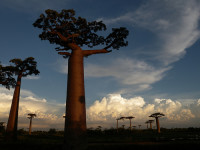
Grandidier’s baobab is surely quite grand.
- Grandidier’s baobabs, also known as ‘giant baobabs’ and ‘reniala’ or ‘renala’ (which means ‘mother of the forest’ in the local language), are very tall trees that are native only to the island of Madagascar in Africa.
- The scientific name of Grandidier’s baobab is Adansonia grandidieri, and it is from the family Malvaceae, the family of mallows.
- Grandidier’s baobabs typically grow to heights of 25 to 30 metres (80 to 100 feet), with a trunk averaging around 3 metres (10 feet) in diameter, and most or all of the branches and foliage sit at the top of the tree, thus accentuating the trunk.
- Grandidier’s baobab trees usually bloom in the months of May to August, and produce edible fruit that ripens during November and December, while the tree usually has leaves only in the wet season, from October to May.
- The trunk of Grandidier’s baobabs is large and cylindrical; red-grey in colour; and the thick bark has a smooth texture.
Grandidier’s Baobab
Image courtesy of Frank Vassen/Flickr
- The large flowers of Grandidier’s baobabs have numerous stamens; white-coloured petals that open only during the night; and the petals turn yellow as they age.
- A Grandidier’s baobab tree can store large quantities of water in its trunk, which swells according to content; and the bark of the tree is useful for making ropes while oil can be obtained from the seeds, and the fruit and seeds are commonly eaten.
- Grandidier’s baobabs are endangered due to land clearing for agriculture purposes, and as a result of habitat changes, the species has had difficulty reproducing.
- Grandidier’s baobabs have flowers that are pollinated by insects and lemurs, and the blooms are said to release an odour of sour watermelon.
- The scientific name of a Grandidier’s baobab is derived from Frenchman Alfred Grandidier, a botanist and explorer from the 1800s, who studied the island of Madagascar over a number of years.
Bibliography:
Adansonia grandidieri, 2015, Wikipedia, http://en.wikipedia.org/wiki/Adansonia_grandidieri
Adansonia grandidieri Baill, n.d, PROTA4U, http://www.prota4u.info/protav8.asp?h=M4&t=Adansonia,Grandidieri&p=Adansonia+grandidieri
Andansonia Grandidiera Seeds (Giant Baobab), n.d, Rare Exotic Seeds, http://www.rarexoticseeds.com/en/adansonia-grandidieri-seeds-giant-baobab-seeds.html





